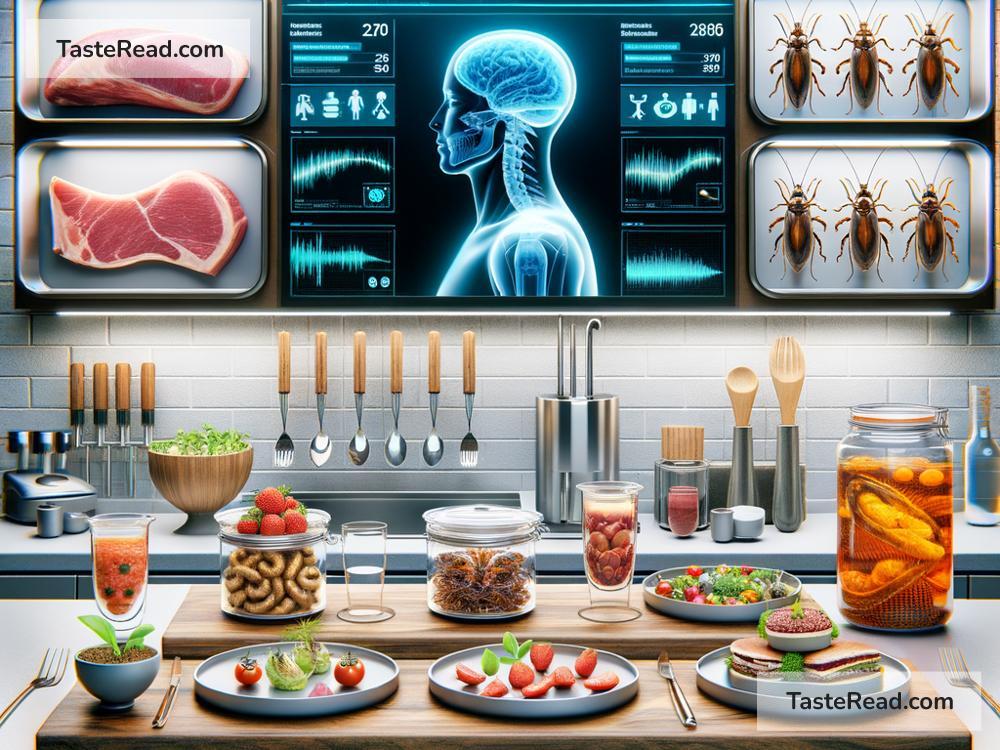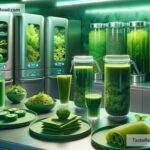The Future of Alternative Protein Sources: A Step Toward Sustainable Eating
As the global population continues to grow, the demand for food will rise. By 2050, the world will need to produce nearly double the amount of food we currently consume. At the same time, traditional ways of producing protein, such as raising livestock like cows and chickens, are becoming less sustainable. These systems require large amounts of land, water, and energy, and contribute to environmental problems like deforestation and greenhouse gas emissions.
With these challenges in mind, scientists, entrepreneurs, and food companies have begun exploring alternative protein sources that are better for the planet and healthier for people. From plant-based burgers to lab-grown meat and protein-rich insects, the future of food is evolving rapidly. Let’s take a closer look at what alternative protein sources are, the benefits they offer, and what the future may hold.
What Are Alternative Protein Sources?
Protein is a crucial nutrient for building and repairing tissues, and it’s found in foods like meat, eggs, and dairy. However, proteins can also come from plants, fungi, insects, and even lab-grown cells. Alternative protein sources aim to reduce our reliance on traditional livestock farming while still providing the protein we need for a healthy diet.
Some of the most promising alternative protein sources include:
-
Plant-Based Proteins: Foods like lentils, chickpeas, soybeans, and peas are rich in protein. Many companies are creating plant-based products that mimic meat, such as burgers, sausages, and chicken nuggets. These items are designed to look, taste, and cook like real meat, making them appealing to both vegetarians and meat-eaters.
-
Insect-Based Proteins: Insects like crickets, mealworms, and grasshoppers are packed with protein, vitamins, and minerals. They’re already consumed as snacks or ingredients in some cultures. Insect farming uses far less land, water, and energy compared to raising livestock.
-
Lab-Grown Meat: Also known as cultured or cell-based meat, this protein source is produced by growing animal cells in a controlled environment. While lab-grown meat is still expensive and not yet widely available, it holds promise as a way to enjoy real meat without harming animals or the environment.
-
Protein from Fungi: Certain fungi, like mycoprotein, are being used to make meat alternatives. Mycoprotein is made by fermenting fungi and can be turned into products like meatless burgers and chicken tenders.
-
Fermentation-Based Proteins: Scientists are also using microbes, such as yeast, to “brew” proteins through fermentation. This technology allows them to create dairy-free milk, cheese, and even egg alternatives without relying on animals.
Why Alternative Proteins Are the Future
There are several reasons why alternative proteins are gaining attention and why they are considered the future of food production:
1. Sustainability
Producing traditional meat requires large amounts of resources like land, water, and feed for animals. It also generates significant greenhouse gas emissions, which contribute to climate change. Alternative protein sources, such as plant-based and insect-based options, are far more sustainable. For example, farming insects requires minimal land and water, and they produce fewer emissions.
2. Health Benefits
Many alternative protein products are designed to be healthier than traditional meat. For example, plant-based burgers often contain fewer saturated fats and calories. Additionally, consuming more plants and less red meat can lower the risk of heart disease, diabetes, and certain types of cancer.
3. Animal Welfare
Using alternative proteins can reduce the need for factory farming, where animals are often raised in cramped and stressful conditions. Lab-grown meat, in particular, offers a way to enjoy real meat without raising or slaughtering animals.
4. Global Food Security
As the global population grows, there may not be enough land or resources to produce enough meat for everyone. Alternative proteins provide a way to feed more people without overburdening the planet.
Challenges Facing Alternative Proteins
Despite their many benefits, alternative proteins face some challenges that need to be addressed:
- Price: Many alternative protein products, such as lab-grown meat, are currently expensive to produce. However, prices are expected to drop as technology improves and production scales up.
- Taste and Texture: Some consumers feel that plant-based or alternative meat doesn’t taste or feel exactly like traditional meat. Food companies are working to improve these products to better mimic the real thing.
- Consumer Acceptance: Many people are hesitant to try foods made from insects or lab-grown cells. Educating consumers and normalizing these options will be important for their success.
The Future of Food
The alternative protein industry is growing quickly. In recent years, companies have introduced a wide range of innovative products, from plant-based chicken nuggets to lab-grown seafood. Major supermarkets now offer plant-based meat alongside traditional meat, and fast-food chains are adding vegan and vegetarian options to their menus.
In the coming decades, we can expect even more breakthroughs. Technology will continue to improve, making alternative proteins cheaper, tastier, and more widely available. Governments may support these innovations with policies that promote sustainable food systems and reduce environmental impacts.
As individuals, we can also play a role by experimenting with alternative proteins in our daily diets. Whether it’s trying a meatless burger or adding cricket powder to a smoothie, small changes can help us move toward a more sustainable food future.
The future of alternative protein sources is exciting and full of possibilities. By embracing these innovations, we can protect our planet, improve our health, and ensure that everyone has access to enough nutritious food. The way we eat is changing—and it’s a change for the better.


